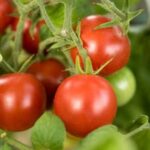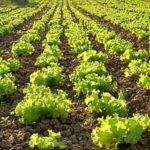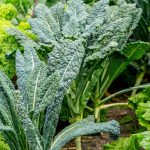Are you interested in growing your own vegetables but don’t have a yard or garden space? Look no further than vegetables container gardening. Container gardening is a convenient and versatile way to grow vegetables in small spaces, on patios, balconies, or even indoors. In this article, we will explore the basics of container gardening for vegetables, including how to get started, choosing the right containers and plants, as well as tips for successful maintenance and harvest.
Container gardening refers to the practice of growing plants in pots, buckets, barrels, or any other suitable container instead of traditional garden beds. This method is especially popular for urban dwellers or individuals with limited outdoor space. The benefits of container gardening for vegetables are abundant – it allows for greater control over soil quality and drainage, reduces the risk of weeds and pests, and makes it easier to move plants to optimal sunlight locations throughout the day.
When it comes to choosing the right containers for vegetable gardening, there are various options available such as plastic pots, wooden crates, ceramic planters, or even repurposed items like old tires or food-grade buckets. Factors to consider when selecting containers include size (based on the mature size of the plants), material (for proper drainage and insulation), and portability (if you plan to move them around).
By understanding these considerations, you can ensure that your vegetable plants have the best environment to thrive in despite being grown in containers.
Choosing the Right Containers
When it comes to vegetable container gardening, choosing the right containers is crucial for the success of your plants. There are several types of containers that can be used for this type of gardening, including traditional clay pots, plastic planters, hanging baskets, and even repurposed items like buckets or old tires. Each type of container has its own advantages and disadvantages, so it’s important to carefully consider which will work best for your specific needs.
The size of the container is an important factor to consider when selecting containers for vegetable gardening. Larger vegetables like tomatoes or peppers will require a deeper container with plenty of room for root growth, while smaller vegetables such as lettuce or herbs can thrive in shallower containers. Additionally, drainage is essential for any type of container used for planting vegetables. Proper drainage helps prevent waterlogging and allows oxygen to reach the roots.
Another important consideration when choosing containers for vegetable gardening is the material from which they are made. Terracotta pots are porous and allow air and moisture to pass through the walls, but they also dry out more quickly than plastic or metal containers.
Plastic containers are lightweight and retain moisture well, but they can become brittle over time when exposed to sunlight. Metal containers are durable and provide good insulation for plant roots, but they can heat up quickly in direct sunlight.
| Fruit | Size | Container |
|---|---|---|
| Tomatoes | Larger | Deeper pot with good drainage |
| Lettuce | Smaller | Shallow pot with good drainage |
Properly choosing the right containers based on the specific needs of each vegetable will lay a strong foundation for a successful vegetable container garden. By considering factors such as size, drainage, and material when selecting your containers, you can create an ideal environment for your vegetables to thrive in a limited space.
Furthermore before you start planting your vegetables make sure have irrigation system installed marked on having automatic watering schedule. This would assure that even if you’re not around you plants are still being nourished well.
Selecting the Best Vegetables for Container Gardening
When it comes to selecting the best vegetables for container gardening, there are several factors to consider. Not all vegetables thrive in a confined space, so it’s important to choose varieties that are well-suited for growing in containers.
Some popular vegetables that do well in containers include tomatoes, peppers, lettuce, spinach, carrots, radishes, and herbs such as basil and parsley. These vegetables are not only compact in size but also have shallow root systems, making them ideal for container gardening.
Tips for Choosing the Right Vegetables
When choosing vegetables for your container garden, consider the amount of space you have available and the amount of sunlight your containers will receive. For small or limited spaces, opt for compact varieties of vegetables or those that can be grown vertically to maximize space. Additionally, take into account the climate and weather conditions of your area. Some vegetables may be better suited for cooler temperatures while others thrive in warmer climates.
Maximizing Variety
One of the benefits of vegetable container gardening is the ability to grow a variety of different plants in a small space. Consider including a mix of leafy greens like lettuce and arugula with root vegetables like carrots and radishes. You can also incorporate herbs and edible flowers to add diversity to your garden.
By carefully selecting a range of different vegetables, you can harvest a bountiful assortment from your containers throughout the growing season. Remember to group together plants with similar watering and sunlight needs to ensure they all thrive together.
By carefully selecting the right vegetables for your containers and maximizing variety, you can enjoy a successful and diverse harvest from your vegetable container garden. With proper care and attention to the specific needs of each plant, you can look forward to enjoying an array of fresh homegrown produce right at your fingertips.
Preparing the Soil and Planting
Container gardening offers a convenient and efficient way to grow vegetables, especially for those with limited outdoor space. To ensure the success of your vegetable container garden, it’s essential to prepare the soil properly and plant your vegetables correctly. Here are some steps to help you get started:
1. Choose the Right Soil: When preparing the soil for your vegetable containers, opt for a high-quality potting mix that is well-draining and rich in nutrients. Avoid using regular garden soil, as it may not provide the ideal conditions for container gardening.
2. Add Nutrients: Before planting your vegetables, consider adding some organic matter or slow-release fertilizer to the potting mix. This will help provide essential nutrients for your plants as they grow.
3. Planting Techniques: When planting your vegetables in containers, be mindful of their spacing requirements and depth of planting. Some vegetables may require more room to spread out their roots, while others can be planted closer together.
4. Proper Drainage: Ensure that your containers have adequate drainage to prevent waterlogged soil, which can lead to root rot and other issues. You can add a layer of gravel or use pots with drainage holes to promote better water flow.
By following these steps, you can create an optimal environment for your vegetable container garden, giving your plants the best chance to flourish and produce an abundant harvest of homegrown veggies.
Remember, with proper soil preparation and planting techniques, you can enjoy the benefits of growing fresh vegetables right in your own home through successful vegetable container gardening.
Watering and Maintenance
Once you have chosen the right containers, selected the best vegetables, prepared the soil, and planted your vegetables, it is important to understand the proper watering and maintenance techniques for vegetables in containers. Watering is crucial for the health and growth of your vegetable plants, and proper maintenance will ensure that they thrive throughout their growing season.
When it comes to watering vegetables in containers, it is essential to water them consistently. Container gardens tend to dry out more quickly than traditional gardens, so regular watering is necessary. The best way to water container-grown vegetables is to water slowly and deeply, allowing the water to reach the roots of the plants. Additionally, using a moisture meter can help determine when your plants need water, ensuring that they are not overwatered or underwatered.
In addition to watering, maintaining healthy and thriving vegetable plants in containers also requires proper care. This includes regular fertilization with a balanced liquid fertilizer and monitoring for any signs of pests or diseases. Keeping an eye on the overall health of your vegetable plants will help you address any issues promptly and ensure that they continue to grow strong and produce a bountiful harvest.
By understanding the importance of consistent watering and regular maintenance for vegetables in containers, you can enjoy a successful container garden full of homegrown produce. With proper care, your vegetable plants will flourish and provide you with fresh, nutritious vegetables throughout the growing season. So whether you are new to vegetables container gardening or have been practicing this method for years, implementing these techniques will contribute significantly to your gardening success.
Sunlight and Location
Container gardening for vegetables relies heavily on sunlight and choosing the right location for your containers is crucial for the success of your plants. Most vegetable plants require at least 6-8 hours of direct sunlight per day, so it’s important to place your containers in a spot that receives adequate sunlight.
When selecting a location for your vegetable containers, consider the direction of the sun throughout the day. South-facing locations typically receive the most sunlight, making them ideal for vegetable container gardening. If you don’t have a south-facing area, look for spots that get morning sun and some shade during the hottest part of the day to prevent your plants from wilting.
In addition to sunlight, you’ll also want to consider access to water and protection from strong winds. Make sure that your chosen location is near a water source or easy to reach with a hose or watering can. Windy locations can dry out soil quickly and may even knock over larger containers, so it’s best to place them in a more sheltered spot if possible.
Proper placement of your vegetable containers not only ensures the health and growth of your plants but also allows you to enjoy the beauty of your garden. Whether you’re placing them on a balcony, patio, or in your yard, strategically arranging your containers will not only make care and maintenance easier but will also create an aesthetically pleasing display.
| Location Factor | Consideration |
|---|---|
| Sunlight | 6-8 hours direct sunlight per day |
| Water Access | Nearness to water source for easy irrigation |
| Wind Protection | Shielding from strong winds to prevent soil drying and container tipping |
Pest Control and Disease Prevention
Common Pests and Diseases in Container Gardening
Container gardening offers a controlled environment for growing vegetables, but it does not mean that it is immune to pests and diseases. Common pests that can affect vegetables in containers include aphids, spider mites, whiteflies, and caterpillars. These insects can cause damage to the plants by feeding on the leaves or sucking the sap from the stems.
On the other hand, diseases such as powdery mildew, blight, and root rot can also impact the health of vegetable plants in containers. It is important for gardeners to be vigilant in monitoring their plants for any signs of pest infestation or disease development.
Natural and Chemical-Free Methods for Pest Control
For those who are practicing organic gardening or are concerned about using chemicals around their home, there are natural methods for controlling pests in container vegetable gardening. One common approach is companion planting, where certain plants are grown together to repel pests or attract beneficial insects.
Additionally, introducing predatory insects such as ladybugs or lacewings can help keep pest populations under control. Natural repellents like neem oil or garlic spray can also be effective against common garden pests without resorting to chemical pesticides.
Preventing Diseases in Container Gardening
To prevent diseases from affecting vegetable plants in containers, it is essential to start with healthy soil and good hygiene practices. Using sterilized potting mix and maintaining clean containers can help minimize the risk of disease development. Proper watering techniques that avoid waterlogging the soil can also prevent conditions that promote disease growth. Lastly, rotating crops and providing adequate air circulation around your containers can further reduce the likelihood of diseases impacting your vegetable garden.
By being proactive in managing pests and preventing diseases in your container garden, you can ensure that your vegetables thrive and produce a bountiful harvest without succumbing to these common challenges.
Harvesting and Enjoying Your Homegrown Vegetables
After all the hard work of selecting the right containers, choosing the best vegetables, preparing the soil, and maintaining your vegetable container garden, it is finally time to reap the rewards of your efforts. Harvesting your homegrown vegetables is a fulfilling experience that allows you to enjoy fresh and flavorful produce right from your own backyard or balcony. Here are some tips for harvesting and enjoying the fruits of your labor.
When it comes to harvesting vegetables from your container garden, timing is key. Different vegetables have different optimal harvest times, so it’s important to familiarize yourself with the specific needs of each plant. For example, tomatoes should be picked when they are fully ripe and have developed their full color, while leafy greens like lettuce and spinach can be harvested as soon as they reach a desirable size.
Once you’ve harvested your vegetables, the next step is to enjoy them. There’s nothing quite like savoring the taste of homegrown produce that you nurtured from seed to harvest. You can use your freshly picked vegetables in a variety of delicious recipes, from simple salads and stir-fries to hearty soups and casseroles.
Not only will you appreciate the superior flavor of homegrown veggies, but you’ll also benefit from their higher nutrient content compared to store-bought produce. So go ahead and savor every bite of your hard-earned harvest.
Conclusion
In conclusion, vegetable container gardening is a convenient and rewarding way to grow your own produce, even if you have limited space. The benefits of container gardening for vegetables are numerous, including the ability to control the soil quality, better pest management, and the flexibility to move your plants to follow the sunlight. By choosing the right containers and vegetables, preparing the soil properly, and providing adequate water and sunlight, anyone can enjoy a successful container garden.
When choosing containers for vegetable gardening, it’s important to consider factors such as size, material, and drainage capabilities. Additionally, selecting the best vegetables for container gardening is crucial for a successful harvest. With careful planning and maintenance, you can enjoy a bountiful supply of fresh produce right outside your door.
So whether you live in an apartment with a small balcony or in a house with limited yard space, vegetable container gardening is a great option. Not only does it provide you with fresh and healthy food options but also adds beauty to your living space. Start small by trying out a few containers with easy-to-grow vegetables and gradually expand as you gain confidence and experience in this fulfilling hobby. Happy gardening.
Frequently Asked Questions
What Vegetables Do Well in Containers?
Vegetables that do well in containers include tomatoes, peppers, lettuce, spinach, radishes, carrots, and herbs like basil, thyme, and mint. These plants thrive in the limited space of a container and are relatively low maintenance.
What Vegetables Can I Plant in the Same Container?
When planting vegetables in the same container, it’s important to consider their size and growth habits. For example, you can plant a combination of lettuce or spinach with trailing herbs like thyme or mint. Avoid overcrowding by choosing compatible plants that won’t compete for space and nutrients.
How Deep Should a Container Vegetable Garden Be?
The depth of a container for a vegetable garden depends on the specific vegetable being grown. In general, most vegetables require a container that is at least 10-12 inches deep. However, for root vegetables like carrots or potatoes, aim for a depth of 12-18 inches to accommodate their growth underground.

If you’re looking to get into vegetable gardening, or are just looking for some tips on how to make your current garden better, then you’ve come to the right place! My name is Ethel and I have been gardening for years. In this blog, I’m going to share with you some of my best tips on how to create a successful vegetable garden.





